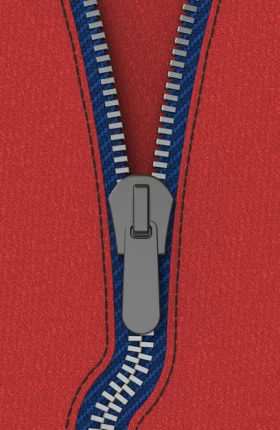For decades, the chief operating officers (COOs) of apparel companies primarily fielded requests from various units and departments and ensured that finished goods were supplied to the market. The COO role was important, but few would have called it strategic, much less the source of competitive advantage.
That was then. Today, the apparel business is rapidly evolving, and with it, the role of the COO. Besides keeping a lid on costs and guarding quality, COOs are being called upon to accelerate operations, digitize them, and make them sustainable—all crucial, strategic priorities at most companies. After spending many years in a behind-the-scenes role, the apparel COO is emerging as a high-profile competitive asset.
Veterans as well as those who are new to the position are feeling these new pressures intensely. They often struggle to design a manageable agenda and provide direction to the numerous brigades that report to them, such as the product development unit, sourcing group, and supply chain team. To help apparel COOs rank the priorities of the many internal and external stakeholders—and thus become more effective competitive assets—we have developed four imperatives:
- Continually improve cost management.
- Enable speed where it matters.
- Launch an end-to-end digitization initiative.
- Manage sustainability risks and pursue opportunities.
Continually Improve Cost Management
The cost of labor to produce apparel has steadily risen for decades, and for much of that time, apparel companies had an effective and legitimate solution: move manufacturing operations to another country with lower costs. When labor costs rose in China, some apparel companies moved their production to Indonesia and Vietnam. More recently, some have moved it to Ethiopia or Myanmar. We call this the sourcing caravan strategy. (See Apparel at a Crossroads: The End of Low-Cost-Country Sourcing, BCG Focus, November 2014.)
However, cheap labor is becoming a rare commodity, and the number of low-cost countries is dwindling. For example, from 2000 through 2017, labor costs in Asia quintupled, on average. (See Exhibit 1.) Labor wasn’t the only component cost that marched higher, though. In that same time frame, the price of cotton more than doubled. Given the reality of increasing labor and material costs, it’s vital for apparel companies to find ways to more actively manage their costs.
That’s not easy, of course. Suppliers’ cost structures are often quite complex and opaque, making it difficult for apparel companies and even the suppliers themselves to determine the costs of the individual production steps and the ingredients. But apparel companies that are able to deconstruct their suppliers’ cost structures find opportunities to cut expenses significantly. For this reason, cost management remains an area where apparel COOs have the potential to make a dramatic and immediate impact.
Apparel companies that can deconstruct their suppliers’ cost structures find opportunities to cut expenses significantly.
Apparel COOs generally manage costs in one of three ways: they identify and track cost inputs and reference points, use cost formulas internally, or create joint cost frameworks. Although all three methods create and use intelligence about apparel costs, each reflects a different level of cost management maturity.
Many apparel COOs identify and track cost inputs and reference points—relatively easy tasks to perform because they rely on fundamental, publicly available information, such as labor rates and commodity prices. Negotiators then use these findings to strengthen their positions with suppliers. For example, if suppliers from two countries offer nearly identical pricing, negotiators who have cost information know which supplier has lower costs—for materials or domestic labor rates, for example—and may be more willing to adjust its pricing. Improving cost identification and tracking skills is an excellent way for apparel COOs to advance their cost management capabilities. We have seen improvements in this area yield 1% to 3% in direct savings.
Using cost formulas internally is the next level in cost management maturity. To develop a cost formula for each garment, a COO identifies the production steps that are required to make a particular garment (and the material for it), the cost parameters for those steps (such as the range of labor rates in terms of, for example, the cost per minute of sewing), and any variables related to a specific garment’s characteristics (for example, the length of its seams or the number of pockets). The COO uses the cost formulas to predict final costs.
Identifying this level of detail is much harder work than identifying cost inputs, but the potential savings are commensurately greater. Solid cost formulas—along with qualitative considerations, such as whether a supplier in a particular country can guarantee delivery—help COOs build a strong, resilient, and price-competitive supplier network. When done correctly, internal cost formulas can easily yield annual savings of 4% to 6%.
COOs with the most mature cost management capabilities engage with suppliers to agree on a joint, transparent cost framework that predicts costs and links to suppliers’ price guarantees. The potential savings with this more proactive approach is huge. We’ve seen COOs achieve annual savings in the range of 8% to 12%.
A joint cost framework can yield savings in two important ways. First, it allows product designers and developers to design with cost in mind. From the beginning, they can know the cost of each additional feature (for example, having a pocket on a T-shirt) and make tradeoffs for optimal value. Second, since the COO and suppliers have agreed to the cost framework, both sides can see the major cost drivers and work to improve them, perhaps even creating benefit-sharing agreements to encourage cooperation. (See the sidebar “Upgrading a Costing Approach: A Case Study.”)
Upgrading a Costing Approach
Upgrading a Costing Approach
A Case Study
The COO of a global apparel company decided to improve the cost framework after frequent pricing disagreements with suppliers—disputes that left suppliers feeling that they were being treated unfairly. The COO had three objectives: to better control cost increases, avoid unexpected costs, and establish supplier agreements that encourage efficiency.
To undertake this effort, the COO engaged internal stakeholders as well as suppliers. The rigorous process involved determining the cost inputs that needed to be improved, such as labor rates. It also required defining myriad parameters, such as how long it takes to stitch together two upper pieces of a shoe. Defining such parameters required gathering and analyzing production data for more than 1,000 products.
The COO implemented the new cost framework by developing a user-friendly IT system that allows designers to enter a product’s characteristics and get an immediate analysis of their cost. The menu-driven system lets designers add or subtract features to see their impact on the total cost.
In a relatively short time frame, the COO had a comprehensive cost framework that improved cost management and quickly unlocked savings of 8%. The suppliers were also happy, because the new cost frame-work eliminated the need to negotiate every new order or adjustment and gave them more certainty around profit margins. For example, a footwear developer can put a shoe’s characteristics into the new system, which will then break out the cost of the shoe in only 60 seconds. Making the effort a joint process helped ensure suppliers’ buy-in from the start.
Enable Speed Where It Matters
The need for speed dominates discussions at many apparel companies and for good reason—in fact, for three good reasons:
- Consumers want it. Consumers want products that reflect the latest trends.
- Competing successfully requires it. Some vertical companies in the apparel industry are already fast at bringing new products to market, which is winning over customers and enabling these players to aggressively expand. That’s putting pressure on other companies to keep up or pursue a competitive advantage.
- Economic value results from it. The business case for speed is strong because products that come to market quickly and reflect the newest trends enjoy better full-price sellthrough.
How quickly a company can create and produce goods depends on how well it coordinates its product development unit, sourcing group, and supply chains, as well as the quality of the company’s relationships with its suppliers.
However, the need for speed varies from company to company and depends on each one’s products. These goods generally fall into three broad categories: apparel basics (proven essentials and best-selling items), updated versions of the company’s classics (seasonal items that sell year after year), and emerging trends (new items that reflect the latest styles).
COOs can help companies identify the products for which speed really matters by clarifying the tradeoffs between speed and cost. By so doing, COOs enable companies to position themselves to take three competitive actions.
Respond quickly to new trends. Increasingly, apparel companies must be able to respond to fashion trends fast, getting hot items on retailers’ shelves during the current season. That often requires a production lead time of less than 30 days. As consumers gravitate toward leading apparel companies that perfect their quick-response models, the old model—guessing a season’s fashion trends 18 months or more in advance—is becoming untenable.
Proactive COOs improve their company’s response time by cutting the time required for individual processes wherever possible. For example, for the design or development phase, these COOs establish clear specifications for garment samples, reducing the number of sample iterations and speeding sign offs on styles. For the manufacturing phase, proactive COOs create a list of materials that can be supplied faster and trims that can be produced in advance. These COOs also strike supplier agreements that anticipate the need for extra capacity, thereby shortening production cycles. Finally, a key ingredient for improving response time is accelerated logistics. Shipping by air, or by sea and air, can significantly speed up transport, but airfreight is more expensive. Because in-season fashion has a substantially higher full-price sellthrough, proactive COOs calculate whether or not that will compensate for choosing the more expensive transport option.
Proactive COOs enable companies to react quickly to trends by making contingency plans.
Watch market trends and react. Apparel companies need to monitor market trends during the various selling seasons to spot winners and ensure that hot sellers are always in stock. Proactive COOs enable companies to react quickly to trends by working with marketing to stay informed and then making contingency plans. Improving material staging, for example, can cut production times in half, particularly the production of greige fabric (unfinished or raw fabric that has not been bleached, dyed, or printed). If a COO commits to purchasing greige fabric before it’s needed, the supplier can produce that fabric ahead of time. Then, when the apparel company needs the fabric to react quickly to market trends, it already has it; the lengthy process to produce greige fabric has been eliminated from the production timeline. (See Exhibit 2.)
For example, if marketing has anticipated that one shirt color will likely outsell the others, and if the COO has purchased more greige fabric than the company needs to fulfill retailers’ preseason orders, then the COO can have suppliers make more shirts in the season’s popular color and deliver them to retailers much faster than usual. Before a COO chooses this approach, he or she must carefully weigh the tradeoffs and consequences of overcommitting to fabric the company doesn’t need against being unable to respond to in-season trends.
Identify never-out-of-stock items. Apparel companies need to make sure that certain items are never out of stock (NOS), otherwise, they risk frustrating not only the retailers that will lose valuable bread-and-butter sales but also their customers. Proactive COOs preempt potential issues by establishing clear guidelines for what qualifies as an NOS item. As a rule, these products need to have a track record of strong demand, come in basic sizes and colors, and have a fairly long life cycle, often one-and-a-half to two-and-a-half years.
Proactive COOs also manage the preproduction, production, shipping, and selling stages. Not surprisingly, COOs that use analytics to predict demand, coordinate with tier one and tier two suppliers, and commit to purchasing significant volumes of greige material are better able to scale production and price garments competitively.
Launch an End-to-End Digitization Initiative
Digitization has created opportunities for companies in many industries to operate faster and more efficiently. But by and large, companies in the apparel industry haven’t pursued digitization. With production concentrated in Asia, where manual labor is still relatively cheap, apparel companies haven’t felt the urgency to digitize their operations. In addition, many corporate officers have struggled to get their arms around digitization—what it means for their companies and what they need to do.
Some apparel companies have started to use big data and advanced analytics to accelerate operations and become more cost efficient, sometimes even applying algorithms to their supply chains and passing along their findings to vendors so that they can improve their cost efficiency. (See the sidebar “Using Algorithms to Transform Supplier Relationships: A Case Study.”) It is a good start, but companies haven’t yet made the leap to end-to-end digitization, which would provide an overview of their entire value chain—that is, all company processes and activities that add value to a garment, including production and marketing.
Using Algorithms to Transform Supplier Relationships
Using Algorithms to Transform Supplier Relationships
A Case Study
A company’s supplier relationships tend to multiply and strengthen over time as various teams continually seek solutions from outside vendors and grow comfortable working with them. These relationships usually begin in order to achieve economic benefits, but those can ebb or even disappear over time.
Such was the case at one particular apparel company; its various business units each had a preferred supplier: the children’s apparel unit had a favorite supplier in Thailand, the women’s apparel division had a preferred supplier in China, and so on. Over time, each unit’s dependency on its respective suppliers had increased, and the suppliers exploited that dependency by raising prices.
Recognizing the problem, the COO decided to improve supplier coordination in order to reduce inefficiencies and increase his ability to negotiate costs. Specifically, the COO wanted to minimize overall production, duty, and freight costs but do so in a way that improved the speed of production and delivery.
With this in mind, the COO developed an allocation algorithm that determined which apparel orders should be produced by which suppliers. The algorithm took multiple factors into account for each supplier, including its material, labor, freight, and duty costs, as well as the variety of items produced at each factory. The latter could increase complexity and, therefore, costs. For example, a supplier that produces 100,000 T-shirts consecutively on a single production line can operate more efficiently than one that produces 15,000 jackets followed by 30,000 T-shirts, 20,000 dress shirts, and 35,000 pairs of pants. The COO found that suppliers with more efficient operations are generally more willing to share the financial benefits with the company.
Using this algorithm proved to be a powerful way to reduce costs. The algorithm helped the COO identify and select a large group of specialists—that is, suppliers that dedicate more than 50% of their production capacity to only one or two products. Their production efficiency helped to lower the apparel company’s costs; moreover, some other suppliers voluntarily reduced costs to keep the apparel company’s business. Overall, the COO optimized production by 4% to 6% and improved his ability to manage the supply base vis-à-vis the company’s future agenda.
When considering this end-to-end view, what becomes readily apparent is that the COO is integral to the value chain, controlling capacity planning, negotiating priorities, optimizing costs, and allocating orders. Without the COO’s active participation, therefore, a fully integrated digital value chain is simply impossible. The following five recommendations can help COOs get an end-to-end digitization initiative off the ground and set it up to succeed.
Without the COO’s active participation, a fully integrated digital value chain is simply impossible
Define infrastructure and data to lay a strong foundation. COOs should define infrastructure and data requirements early on. As a general rule, digitization needs a scalable, cloud-based infrastructure and a layered, modular, and data-centric architecture. This creates a seamless, end-to-end backbone that serves as a single source of truth from which employees can extract insights on customers, products, and processes. Not only does a well-defined infrastructure radically reduce process complexity, but it also creates a 360-degree view and powerful collaborative capabilities. For example, designers working on personal laptops often design in a vacuum, whereas designers working in the cloud can easily get input from not only their colleagues in the company but also the vendors in the supply chain.
Create digital twins. COOs should oversee the creation of “digital twins”—digital representations of physical products, objects, processes, and systems. The idea is to seamlessly connect the physical and digital worlds, including those for planning, product creation, production, and selling. For example, the digital twin of a hand-drawn design is a 3D virtual design; the digital twin of a factory-sewn sample is a virtual sample; and the digital twin of a physical show room is a virtual show room, where products can be viewed on a mobile device or through virtual-reality glasses.
What will be the outcome of creating digital twins? In terms of product design, for example, teams will create digital designs by accessing a digitally available toolbox that includes modular design elements and a list of standard materials. The output will be a 3D rendering of the product, with technical specifications, that exists in the cloud. The characteristics of the product can then be tested, analyzed, and refined in collaboration across the enterprise.
Coordinate digital initiatives. Oftentimes, companies will have multiple, uncoordinated digital initiatives underway. COOs should assess these various initiatives to make sure that they all further the end-to-end digitization of a particular product, process, or system and that they use resources wisely. It’s likely that some of these initiatives will continue, others will need to be repurposed, and still others will be shut down.
Start small and test. Embarking on the digitization journey can seem overwhelming and paralyze decision making, especially if management believes it needs to take a big bang approach. It is better to start small. COOs should narrowly define a process, for example, that can be developed, tested, and refined easily. Then the lessons learned should be applied to the next task.
Also, COOs should focus on one business unit at a time to build digital continuity from product design through sales, instead of trying to roll out one element, such as a virtual show room, across all business units at once. The risk with the latter approach is that the digital element is poorly integrated with nondigital functions in each business unit. It’s far easier to steer multiple digital initiatives in one business unit than it is to guide the implementation of one digital element across multiple business units.
COOs should focus on one business unit at a time to build digital continuity from product design through sales.
Set up an interdisciplinary team with digital expertise. For an end-to-end digitization project to succeed, COOs should put together a cross-functional team of people who are experienced in thinking digital. The interdisciplinary nature of this team can’t be stressed enough. Every functional area needs to have a seat at the table. Not only does this improve coordination and create a digital mindset, but it also ensures that no single part of the company is responsible for driving digitization.
If there’s not enough digital expertise in-house, the COO should look to hire when possible, although digital experience is often hard to find and attract. At the very least, the COO should put programs in place that “upskill” existing employees. Such programs could host speakers, provide master classes, and perhaps visit companies in other industries—such as automotive—that have already digitized.
Manage Sustainability Risks and Pursue Opportunities
Despite some recent progress, the apparel industry is still beset by massive environmental and social challenges, particularly pollution and dangerous working conditions. Many of the stakeholders—consumers, retailers, and suppliers alike—are increasingly aware of these issues and are beginning to demand change. Being a good corporate citizen—which includes meeting one’s legal, ethical, environmental, social, and economic responsibilities—can no longer be an item on a company’s to-do list; it must be at the heart of a company’s identity.
Being a good corporate citizen must be at the heart of a company’s identity.
Indeed, calls for change and a greater focus on renewable energy, recycling, nonhazardous materials, and working conditions are likely to grow more intense as the global apparel industry’s consumption rises from 62 million tons of garments in 2015 to an estimated 102 million tons by 2030—the equivalent of more than 500 billion T-shirts. (See Pulse of the Fashion Industry, a Global Fashion Agenda and BCG report, 2017.)
COOs can help manage the challenges. First, they can identify and address potential sustainability issues in their global supply chains. No company can afford a scandal involving suppliers whose practices damage the environment, create unsafe working conditions, foster grueling work hours, or include child labor. COOs can establish codes of conduct for suppliers, require their signed consent, and enforce the agreements by auditing and spot-checking suppliers.
Second, COOs can enable transparency with the public by providing policy information and data that demonstrate their companies’ progress on environmental issues and working conditions. Global players such as H&M, Nike, and Zara publish supplier details—names, addresses, and telephone numbers, for instance—to promote transparency and accountability.
Third, COOs can help companies pursue the business opportunities that sustainability presents. For example, consumer demand is growing for apparel produced using sustainable principles. (See the sidebar “Producing the First Gold-Certified T-Shirt at a Competitive Price: A Case Study.”)
Producing the First Gold-Certified T-Shirt at a Competitive Price
Producing the First Gold-Certified T-Shirt at a Competitive Price
A Case Study
An international retail clothing chain based in Europe asked its COO to assess the potential of creating and manufacturing products that meet the criteria and requirements of the Cradle to Cradle Products Innovation Institute. The organization sets standards regarding the use of raw materials, chemicals, and reusable materials; the disposal of industrial wastewater; the use of renewable energy; and working conditions.
The COO set up a task force with the goal of creating the first gold-certified garment—a biodegradable T-shirt. The team assessed several of the company’s current suppliers and chose two Indian companies on the basis of their dependable supply of organic cotton, their use of treatment plants for industrial wastewater, and their use of windmills for electricity.
Even though a T-shirt is one of the easiest products to design and produce, meeting the institute’s standards was a challenge. The team needed to find alternatives for polyester and nylon stitching thread, as well as for care labels and dyestuffs, by innovating within the existing supply chain. Additionally, the task force needed to offset the garment’s carbon footprint, test its biodegradability, determine if the product contained any hazardous materials, and include QR codes in the T-shirts that explained how to recycle the garment.
After nine months of research, the company started manufacturing T-shirts that were not only certified by the institute at the gold level but were also the first such garment produced in Asia at scale. The company launched the biodegradable T-shirt in its retail stores in Europe and priced it at €7; distribution was expanded to other continents within a few months. The T-shirt has been one of the best-selling products in the company’s history, and its margins are on par with conventional products. Furthermore, the T-shirt has helped attract new customers and increased the average amount that a shopper spends.
Marketers can take the lead, identifying the sales opportunities. But their economic feasibility will hinge on the COO’s ability to put the right operations in place with sufficient scalability. To produce sustainable apparel successfully, COOs should focus on what is possible in four areas:
- Closed-loop recycling, which is a production system that uses the waste or byproducts of a process or product in another process or product
- Sustainable manufacturing, which is the production of garments from sustainable ingredients using a sustainable process. For example, in addition to using sustainable fabric, the thread used to sew the garments would be sustainable, and the ink used to print a pattern would be recyclable, minimizing the garment’s toxic footprint
- Reduced-energy footprint, which minimizes energy consumption and enables 100% carbon neutrality
- Chemical and water optimization, which eliminates the use of hazardous chemicals and, therefore, water pollution
The apparel COO’s role, always important, is becoming even more so. Besides keeping costs down and guarding quality, COOs are now called upon to accelerate operations, digitize them, and make them sustainable—all crucial, strategic priorities. Veteran COOs, as well as those who are new to the position, are feeling these new pressures intensely. And while they may sometimes struggle to design a manageable agenda and give direction to the many units that report to them, it is a task that done correctly can transform the COO into a potent competitive asset.






